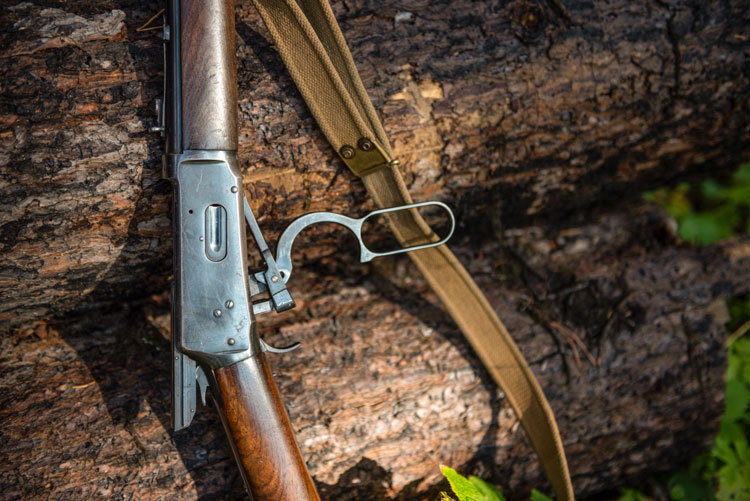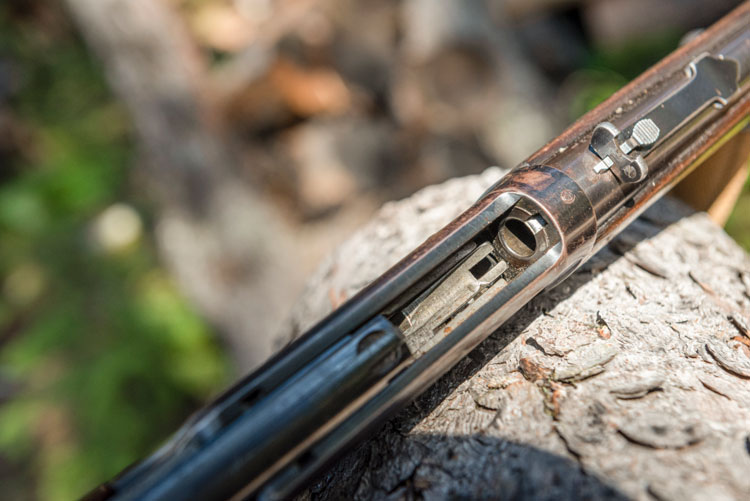

Prior to the attack, tension between the Japanese and American governments had been strained, with a Gallup poll indicating that over half the American population thought war with Japan was inevitable. But, the particularly bloody and indiscriminate nature of the Japanese attack, delivered without any preceding declaration of war, catalyzed the simmering American war effort. The American anger and rage was so palpable that Congress declared war on Japan just 33 minutes after Franklin D. Roosevelt finished his address where he famously referred to the 7th of December at a date that will forever live in infamy.
But the Japanese aggression show in the waning days of 1941 didn’t just galvanize the American population. Although Canada had already been embroiled in the war effort for years before the first Japanese bombs landed, due primarily to Canada’s close ties to England, the attack on Pearl Harbor served as a wakeup call to those Canadians living on the west coast: The war was no longer a world away. It was on their door step.
But, to be fair to those residing in BC at the time, the Japanese aggression in the Pacific didn’t trigger a response so much as it merely elevated an already extant sentiment for self-reliance and defense that fomented earlier in the war. With a healthy corp of aged WWI vets unable to serve in their nation in the European theatre of operations, plenty of politically active trade unionists and a healthy dollop of well-seasoned outdoorsmen, British Columbia’s denizens were already clamoring for a degree of involvement in the war effort. And with the Japanese attacks on Pearl Harbor, that plight grew from a desire to protect the well-populated suburbs around Vancouver and Victoria into a full-fledged cry for a province-wide homegrown defensive force.

And so, the idea was hatched to create something of a homebrew solution to this Japanese incursion. Borrowing heavily from historical guerilla warfare and irregular units, the Canadian government announced the formation of the “Coast Defence Reserve Militia” on March 14, 1942. Shortly after, the name was changed to the Pacific Coast Militia Rangers, or PCMR.
The name came from a long tradition of irregular frontier militia organizations, most notably Rogers’ Rangers; an 18th century irregular militia formed under Lt. Col. Robert Rogers. Active as a British company during the Seven Years’ War, Rogers’ Rangers were well valued by the English as a nimble, light infantry force capable of harassing the enemy as well as gathering intelligence on their movements and operations. Clad in their unique quasi-camoflage green wool uniforms, Rogers’ Rangers used vastly more modern tactics than their red-clad brothers-in-arms, and almost as a by-product of this unconventional form of warfare disposed of much of the drilled-in-discipline that average British Army unit thrived on. But their efforts never suffered for it. In fact, Rogers’ Rangers were so effective that the Crown saw fit to expand the initially small unit into a full corps numbering more than a dozen companies and between 1,200 and 1,400 men.
Forming the backbone of the redcoat’s reconnaissance and intelligence-gathering effort during their initial seven year engagement, Rogers’ Rangers were eventually disbanded in 1761, but were revived shortly after as a Loyalist force during the American Revolutionary War. During this period, the unit was carried on the British Army lists as the Queen’s Rangers, First American Regiment and today, that same unit can be found at the Fork York Armoury in Toronto, where they’re now known as the Queen’s York Rangers (1st American Regiment), R.C.A.C.
And it was around Rogers’ Rangers tradition that the Pacific Coast Militia Rangers formed; valuing the same preference for a small, lightweight and nimble fighting force that specialized in intelligence and guerilla warfare more than perfect discipline in pitched battles. In fact, one A. G. MacDonald, writing for the British Columbia Lumberman in 1942, recounts a communique sent by General George Pearkes, VC, PC, CC, CB, DSO, MC, CD, OD and General Officer Commanding in Chief Pacific Command to his men thusly;

At its height, roughly 15,000 men were enlisted in the PCMR’s 126 companies scattered around the province. Each company was given a numerical designation and a regional title, such as the No. 1 South Vancouver Island Rangers, or the No. 100 Kelowna Rangers. From there, each company was subdivided into detachments, led by a member of the detachment awarded the provisional rank of Lieutenant within the militia, and then Groups, led by a similarly provision Corporal. Interestingly, and true to the Ranger tradition, these ranks were not awarded by ever-higher ranks, but were rather elected by the men they served. Should a leader lose the confidence of his men, a new election could be held, and a new leader selected. Each member was not paid, except when called out on active duty, at which point they would be compensated commensurately with their analogs in the regular Army.
But pay wasn’t the only thing that PCMR members did without. Due to the intentionally de-centralized nature of the force, the rapid enrollment of members (over 10,000 men had volunteered to join the PCMR within the first four months of its existence) and the desire to keep costs down, the government kept PCMR supplies relatively sparse; initially launching with a single white arm band being the solitary piece of uniform kit issued to a member. Worn on the left sleeve, and inscribed with the member’s unit and the letters “PCMR” in large block script, this was augmented later with a denim water-repellent uniform comprised of either a large overcoat designed to be worn over civilian dress, or a similarly water repellent denim uniform in the more conventional battle-dress style.
The final identifying mark of a Ranger was the unique cap badge; displaying the ranger crest and measuring approximately 1.5” tall and 1.75” wide. The crest is surmounted with a thunderbird icon looking to the left, representing the PCMR’s vigilance along the west coast, and is backdropped by a the imagine of a Winchester ’94 carbine and a double-bitted axe crossed behind the PCMR banner and maple leaf insignia that occupy its centre. The former represented the tradition of the British Columbian woodsmen from which the PCMR pulled its membership, while the latter served to identify the branch of service and of course, the maple leaf needs no explanation. Finally, the PCMR’s Latin motto; “Vigilans” is written on a scroll at the bottom of the crest, and translates to “vigilance.” The cap badge would be worn on the front of the PCMR’s issued shooting caps, or used to pin up the brim on one side in the Australian style.
Although the militia served many purposes, including but not limited to assisting in the training of regular Army units, bolstering regional moral, and ensuring BC’s residents felt appropriately safe, it was at its core still a home guard unit. And so, while PCMR members were initially without issued arms, in July of 1942 the Minister of Defence conveyed to the House of Commons that Pacific Coast Militia Rangers members would be issued weapons as soon as possible. And he was true to his word: Within months, coastal units were already training with their then-new Sten submachine guns, which were eventually issued to all PCMR companies at a rate of one Sten gun for every 10 to 15 men. Coincidentally, it was PCMR instructors that pioneered what would become the Canadian Army’s preferred method of shooting the Sten gun in combat: From the hip, forgoing the use of the forward grip, and instead bracing against the gun’s automatic fire by holding the side-loaded, horizontal magazine.

However, with the popularity of the PCMR only growing, the supply of seized arms was quickly exhausted and the Canadian government required another solution, and found it in the commercially available Winchester Model 94 and Marlin Model 1936 lever-action carbines.
The decision to purchase such unconventional arms for the PCMR came from a variety of reasons, not the least of which was apparently the onset of hunting season; in a letter from one Lieutenant Barry to his commanding officer, Captain Johnson (both of the No. 73 Company Hope), Barry boldly said; “It’s getting near hunting season and I would like to get some 30/30s… to give the boys.” However, the decision wasn’t purely based on the lever guns desirability as a sporting arm. The military thought that the same attributes that made the Model 94 and Model 1936 such great sporting rifles for the region would also make them ideally suited as military arms: Their light weight made them easier to carry over the rough terrain than a conventional service weapon, and their compact size made them substantially wieldier in the dense brush. Additionally, the military expected their simple design and ease of maintenance to be a boon, as would the Ranger’s familiarity with the platform. And finally, with the European theatre demanding the vast majority of the military’s resources, the commercial availability of ammunition was seen as a massive logistical benefit. And although the only downside to the Model 94 and Marlin’s issue was the relatively low-powered .30-30 round they fired, the combination of the Ranger’s guerilla tactics, knowledge of the terrain, and the province’s incredibly dense foliage would ensure that any engagements would likely transpire well inside the 300 yard range the military had given the rifle.
To prepare the rifles for service, they were all fitted with sling swivels by local gunsmiths, with the process for the Winchester Model 94’s sling fitment following one of three options: Using buttstock swivels of the same type as seen on the Ross rifle, with an additional barrel band produced locally, commercial aftermarket sling swivels, or finally, a combination of the two. Slings were simple Canadian-marked web slings. Issued ammunition was Remington Kleanbore, utilizing a 160-grain bullet, but many Rangers augmented their issued ammunition supplies with commercial ammunition purchased at personal expense.

Both were employed frequently and with great prowess both during hunting season, and at any of the 163 rifle ranges constructed by the PCMR companies, as the main focus of all Ranger training was marksmanship. And due to both their oftentimes pre-existing familiarity with shooting and their freshly issued arms, the members of the PCMR gained a well-deserved reputation as sharpshooters, frequently competing with and beating regular Army units. One such occurrence was recorded by the Kamloops Sentinel in 1944:
“The biggest get-together this year of military units for a day’s shooting on the Kamloops rifle range took place last Sunday… Units participating included Pacific Coast Militia Rangers Nos. 85 and 124 Companies; 2nd Battalion Rocky Mountain Rangers; Royal Canadian Ordnance Corps and Royal Canadian Air Force.
The PCMR teams took first, second and third with the [Rocky Mountain Rangers] coming fourth.”

Sadly, however, approximately 600 carbines were returned to the government when the PCMR was disbanded. These rifles are thought to have survived into the late 1960s, primarily serving with federal and provincial employees such as conservation officers, park rangers, and police. However, with serviceability becoming a concern and more modern wares available, all these rifles were eventually destroyed.
However, the rest remain out there, and although they are now somewhat sought after by collectors most PCMR rifles and carbines are still in Canada; the last vestiges of BC’s short lived guerilla army of woodsmen and the very last lever action rifles on the planet to see military duty.
Links
https://open.library.ubc.ca/cIRcle/collections/ubctheses/831/items/1.0107130
https://app.ufv.ca/fvhistory/studentsites/wwII/rangers/
http://www.watchersofthenorth.com/home/history-rangers
https://www.canadiansoldiers.com/organization/specialforces/pcmr.htm
http://www.nambuworld.com/pcmr.htm